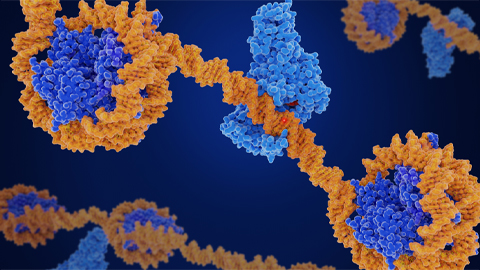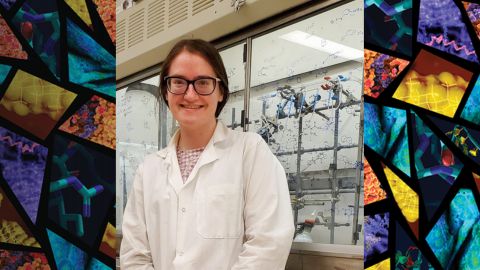Our internal ecology
According to a recent estimate, if you sample enough humans’ intestines, almost 40,000 types of microbe can be found. Any individual may have 100 trillion individual micro-organisms in one or two thousand taxonomic groups. How does the microbiome maintain such diversity?
One model to explain the enormous variety borrows from studies of larger ecosystems. A well-known theory in ecology, nonequilibrium coexistence of competitors, suggests that as an environment fluctuates, different species gain an edge over neighbors — but their ascendance rarely lasts long.

Intestinal nutrients fluctuate as the human host eats and excretes, in time with the physiology of sleep–wake cycles, and along the length of the gut. A layer of mucus that protects host cells from commensal microbes introduces new oligosaccharides as a fuel source and also separates microbial communities into mucosal and luminal niches. As conditions change, species in the microbiome shift in abundance and jockey for survival, and the constantly changing competitive edge keeps the ecosystem diverse.
According to University of Ottawa postdoctoral fellow Leyuan Li, the time is ripe for microbiome studies to apply population modeling and systems dynamics from macroecology to this more intimate ecosystem.
“Most of the time we study the gut microbiome as a whole: We sequence one sample as if it were representative of our whole gut,” said Li. “The gut is actually a heterogeneous system … so we need to start thinking about the gut microbiome like a rainforest.”
Li, who conducted her Ph.D. studies building artificial ecosystems, now studies gut microbiome dynamics in health and diseases such as inflammatory bowel disease in the lab of Ottawa professor Daniel Figeys. In a recent review in the journal Molecular & Cellular Proteomics, the pair offer an introduction to microbiome ecology.
The review highlights the potential for metaproteomics, which characterizes the proteins of whole communities of microbes, to describe microbial function. Most microbiome studies use metagenomics, ribosomal RNA sequencing of the mixed population of a microbial community, to identify the bacteria, fungi and archaea that are present. Li thinks metaproteomics also may help researchers road-test increasingly popular ex vivo experimental models of the microbiome to make sure they match up to the real thing.
“Using metagenomics, you know who are there and what they can do,” Li said. “With metaproteomics you know who are there and what they are doing.”
Enjoy reading ASBMB Today?
Become a member to receive the print edition four times a year and the digital edition monthly.
Learn moreGet the latest from ASBMB Today
Enter your email address, and we’ll send you a weekly email with recent articles, interviews and more.
Latest in Science
Science highlights or most popular articles

CRISPR epigenome editor offers potential gene therapies
Scientists from the University of California, Berkeley, created a system to modify the methylation patterns in neurons. They presented their findings at ASBMB 2025.

Finding a symphony among complex molecules
MOSAIC scholar Stanna Dorn uses total synthesis to recreate rare bacterial natural products with potential therapeutic applications.

E-cigarettes drive irreversible lung damage via free radicals
E-cigarettes are often thought to be safer because they lack many of the carcinogens found in tobacco cigarettes. However, scientists recently found that exposure to e-cigarette vapor can cause severe, irreversible lung damage.

Using DNA barcodes to capture local biodiversity
Undergraduate at the University of California, Santa Barbara, leads citizen science initiative to engage the public in DNA barcoding to catalog local biodiversity, fostering community involvement in science.

Targeting Toxoplasma parasites and their protein accomplices
Researchers identify that a Toxoplasma gondii enzyme drives parasite's survival. Read more about this recent study from the Journal of Lipid Research.

Scavenger protein receptor aids the transport of lipoproteins
Scientists elucidated how two major splice variants of scavenger receptors affect cellular localization in endothelial cells. Read more about this recent study from the Journal of Lipid Research.

